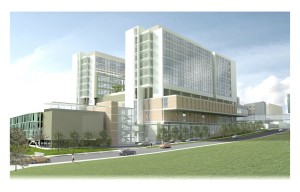PRACTICING SYSTEMS SAVVY FOR DECADES: PROVIDENCE REGIONAL MED CENTER PART 2
/This is my second post (part 1) focused on Providence Regional Medical Center of Everett, Washington and how I see their innovations as evidence of organization-wide systems savvy. That is, their efforts show that they understand both technical and organizational opportunities, and that they have the ability to weave them together into innovations -- in this case, life saving innovations.
I read about Providence in a BusinessWeek article and am thankful to Kim Williams, the Chief Nursing Officer of Providence and Judy Espedal, a Cardiac Critical Care staff nurse, and Dr. James Brevig, Director of Cardiac Surgery, for taking the time to tell me their story. Their examples are valuable because they give hope for healthcare innovation, they show us an exceptional process over a long span of years, and they help us see technology tools beyond computers and email. Here I will look at their approach as an overall practice of systems savvy, in Part 1, I provided a more detailed view of their "single stay" innovation. 
Why am I certain that the Cardiac Surgery team has systems savvy? Because they haven't made just one transformation -- but several -- each drawing on both technology and organizational practice to provide improvements in patient care.
It is also important to understand that their innovations have been triggered by different forms of observation. In Part 1, it was the nursing staff's observation of problems associated with how patients transferred to different units during the course of their care. In today's examples: Blood conservation (less transfused blood is better in many cases) and skilled nursing education – the changes were triggered by statistical analysis suggesting room for improvement. Statistical techniques are themselves technology tools to apply in your organizational setting.
Blood conservation
In 2004 Dr. Brevig began the blood conservation program based on published research. He pushed for changes in surgical technique to reduce blood loss, changes in bypass machine settings to reduce the use of transfused blood, added a blood conservation coordinator to the staff, and worked with the critical care nurses on how to provide blood on outcomes, rather than routine. Follow-on analyses of patient outcomes verify the program's success. From 2003 to 2007 the transfusion rate has decreased from 43 to 18% and the hospital stay time has been reduced by a half-day.
Skilled nursing education
In 2007 the cardiac surgery unit saw a bump to 12.2% of patients being readmitted to the hospital within 30 days. They used their analysis tools to dig into the issues and found that many of these patients were from skilled nursing facilities. Kim Williams says the team looked to what they could do to help these facilities take on patients after surgery. Providence developed an education program where a cardiac surgeon/critical care nurse team visit the skilled nursing facilities to help educate the staff on how to take care of cardiac surgery patients -- teaching them about the common problems associated with readmissions -- at no charge to the facility. In 2009 the readmission rate was down to 8.1%.
Once could be a fluke. Twice could be coincidence. Three times (single stay, blood conservation, skilled nursing education) is demonstrated skill with systems savvy. I would stand by this assessment even if there have been failures in the mix (though I'm not aware of any), given that their methods include long-term tracking and adjustments based on data. This data appears to flow freely via collaboration, attention to communication, and long-term commitment.
I asked Dr. Brevig about the distinguishing characteristics of the group – what, in his opinion, enables this team to be distinctively different in terms of their approach? He replied that the collaborative nature of the hospital pushes for buy-in and input across all members of the unit. My interpretation is that when true collaboration occurs in such a complex organization, technology and organization practice opportunities will both end up in the mix. We form teams to get diverse input, and sometimes, as in this case, it actually works.
Judy Espedal also emphasized the time and focus needed, noting that transformations take years and that you have to apply yourself from start to finish. Commitment is more likely given the Providence environment: With collaboration and communication, commitment is more likely. From buy-in to showing that the innovation works, instituting the new practice, and on-going evaluation... these are conscious, explicit applications of systems savvy. No one functional area is making a decision. No one layer of the organization is making a decision. No one technology or practice stands above the rest. Providence takes a long-term perspective working with their full system of opportunities.
Summary of Providence's systems savvy
- Ability to use different methods for identifying opportunities (not using just one lens).
- Application of both technology tools and organizational practice to address the opportunity (the basics of systems savvy).
- Long-term focus and tracked outcomes to suggest further adjustment (savvy, wisdom, is more than a short-term activity).
The doctors, nurses, and staff of Providence Regional Medical Center have a clear ability to see room for improvement and to find ways to do something about it. They draw on physical and analytic technology tools and make adjustments in their organizational practice given the variety of skills available, and they increase skills when needed. They do not try to fix a problem with a single "silver bullet." The team uses an integrated approach where technology and practice support one another to reach specific goals.
I thank Providence for taking the time to share their story. This is health care reform.







